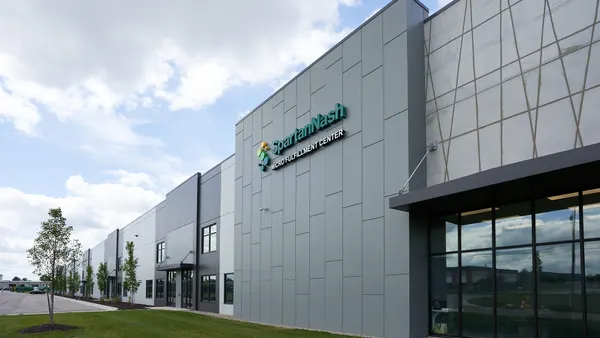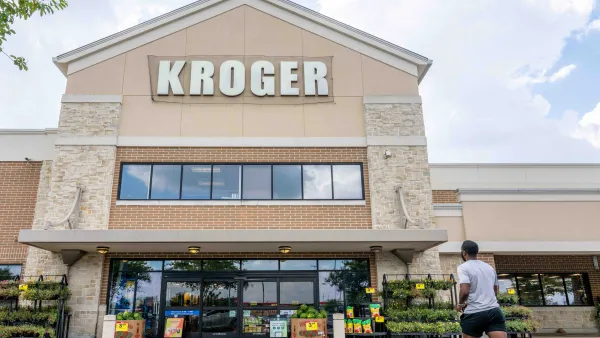Dive Brief:
- Save-A-Lot is exploring a sale or possibly taking on an investor as competition and a large debt load weigh on the business, according to a report from Reuters citing unnamed sources.
- Sources told Reuters the company has hired investment bank PJ Solomon to explore a deal. The hard discounter has a $728 million term loan due in 2023 and a credit line of $250 million, according to credit agency Moody's. If Save-A-Lot can’t secure a deal, it will look for other ways to reduce its debt.
- Save-A-Lot, which operates around 1,230 stores in 36 states, the Caribbean and Central America, is the second largest hard discounter in the U.S. behind Aldi. Private equity firm Onex bought the chain from Supervalu in 2016 for $1.4 billion.
Dive Insight:
Save-A-Lot has tried to improve its business in the three years since Supervalu sold it after failing to take the chain public. The discounter hired Lidl veteran Kenneth McGrath as its chief executive in 2017 and recently launched a brand revamp along with a sweeping round of price cuts. It’s starting to build new stores with features designed to be more widely appealing, like expanded produce, meat and frozen selections, wider aisles and improved lighting.
A recent Tampa Bay Times story indicated that Save-A-Lot, long known for operating in underserved neighborhoods, is also starting to build new Aldi-like stores in more competitive neighborhoods. Such a move expands its customer reach but also opens it up to new competition. Later this year, a district manager told the paper, Save-A-Lot plans to start remodeling existing stores with many of these same features.
These initiatives are expensive and require time to take hold, however — time Save-A-Lot doesn’t have as competitors like Aldi and Walmart make their own updates at a breakneck pace. It’s also difficult to roll out new measures and impose rigid discipline — keys to discount model success under companies like Lidl — across franchise stores, which comprise around 70% of Save-A-Lot’s fleet.
"In a franchised organization, it is difficult to change stores quickly and there have been multiple leaders and directions pre- and post-Onex," Neil Stern, senior partner with McMillanDoolittle, told Grocery Dive. "They have not clearly spelled out their distinctiveness in this competitive market. As a result, the store base has shrunk and the company has lost momentum."
According to Reuters, Save-A-Lot’s term loan has been trading as low as 50 cents on the dollar lately. Moody’s downgraded the company’s credit rating from B to C-grade last year, citing growing competition and thinning margins.
In January, Save-A-Lot moved from its longtime Earth City, Missouri headquarters to a new $8 million building in St. Ann. One month later, it laid off 80 workers at the location.
What sort of deal might the discounter snag? Save-A-Lot operates in a growing discount sector, but its debt load and franchise-heavy discount model make it a hard sell, Stern said. Getting picked up by a wholesaler "might make some sense," he noted, or another private equity firm might swoop in.
"There really isn't a logical strategic buyer," Stern said. "The business model is different than what most grocers and even the other discounters run."
Meanwhile, Aldi, which has more than doubled its store count over the past decade, is building and remodeling stores across the country, while Lidl continues to expand despite its early missteps on the East Coast. The latter chain will open its first stores on Long Island next year following its acquisition of Best Market.
Grocery Outlet, another discount competitor, filed a registration statement in March with the Securities and Exchange Commission, signaling it intends to go public.











